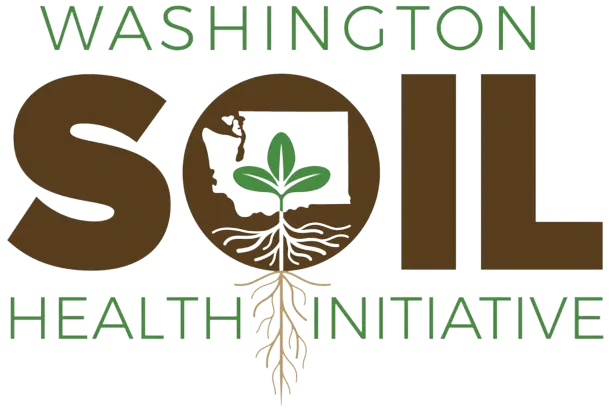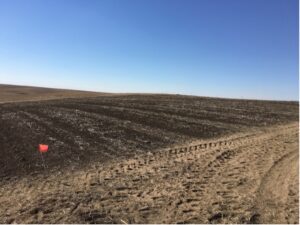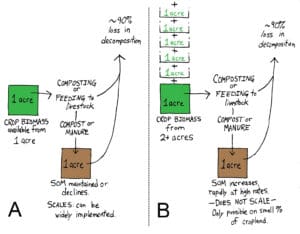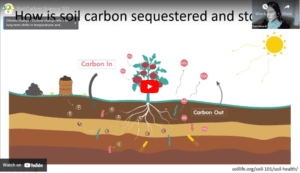Soil Organic Matter
Soil Organic Matter is the portion of soils not made up of minerals, air, and water, but is instead composed of animal, plant, and microbial matter in various stages of decomposition. SOM is comprised of approximately 58% organic carbon (to convert total organic carbon (TOC) to SOM, an easy rule of thumb is to simply multiply by 2). The remaining portion of SOM includes other essential plant nutrients such as nitrogen, phosphorous, and sulfur.
SOM varies by inherent soil and landscape properties such as texture, mineralogy, precipitation, and temperature. It is also greatly impacted by management. To learn more about how to increase SOM, read about the NRCS principles of building soil health and check out our resources.
SOM underlies many of the benefits and ecosystem services that soils provide. It has a large impact on almost all other soil properties and is often used as a primary indicator of soil health. However, SOM can be slow to change as the result of management. Because of this, many other indicators have been developed to detect more sensitive components in SOM.
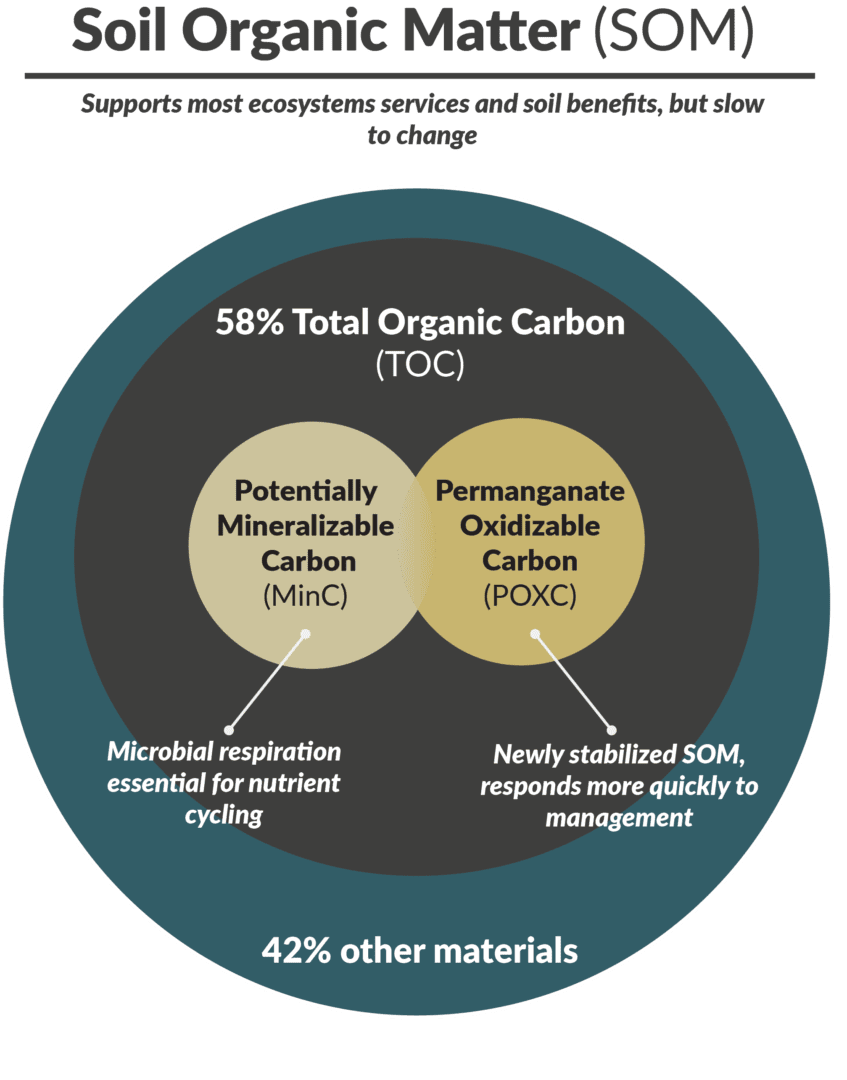
Two more sensitive measures of soil organic matter:
Potentially Mineralizable Carbon (MinC, frequently referred to as “Soil Respiration”) measures the release of carbon dioxide (CO₂) from soil. This measurement is done in a laboratory incubation under controlled conditions “ideal” for microbes. The term mineralization refers to the process in which soil microbes produce CO₂ as they decompose SOM and plant residues. This process also releases other nutrients, like nitrogen, which can be taken up by crops. Higher MinC represents greater potential biological activity. Soils with lower SOM will have inherently lower MinC, while compacted soils may not provide adequate aeration for the mineralization process.
Permanganate Oxidizable Carbon (POXC, once referred to as “Active Carbon”) is a fraction of SOM that is easily influenced by changes in management (compared to SOM, which can take up to ten years to detect a difference). In this laboratory test, a portion of SOM is decomposed or oxidized by potassium permanganate. This test measures a portion of SOM that is newly stabilized and may be an early sign of long-term carbon storage.
Managing soil organic matter
- Reduce disturbance: soil organic matter is especially susceptible to erosion. With tillage, the soil structure is broken, and soil organic matter is then more easily accessible to microbes that will quickly decompose it.
- Incorporate organic matter additions: adding organic matter through compost or manure will increase soil organic matter.
- Leave crop residue: crop residue on the soil surface can reduce erosion and subsequent loss of soil organic matter, and crop residues left behind will slowly become soil organic matter.

